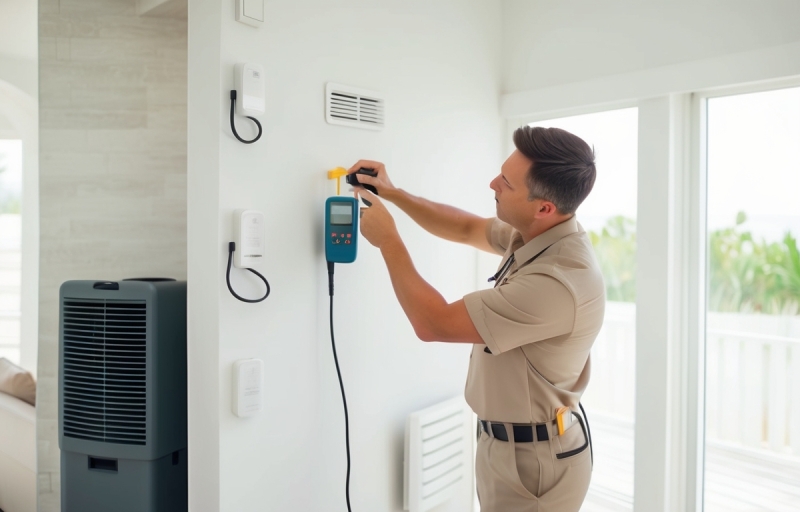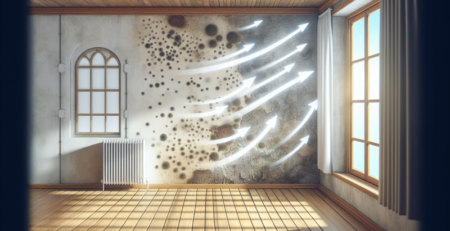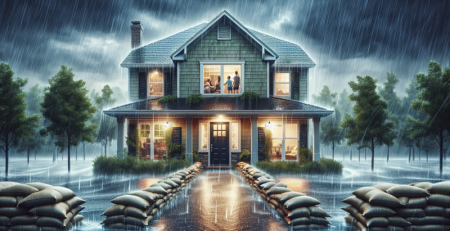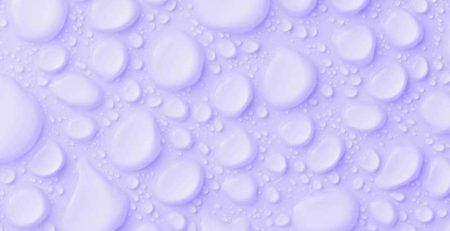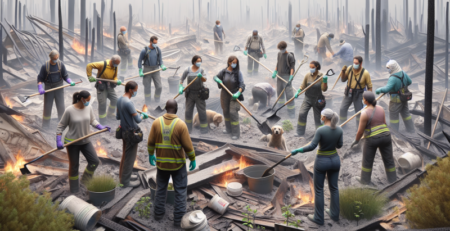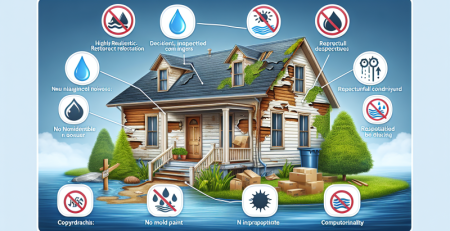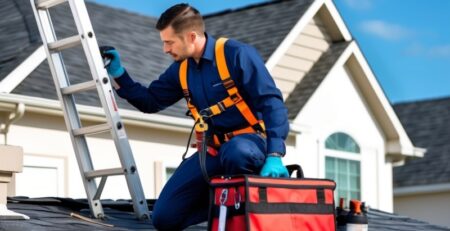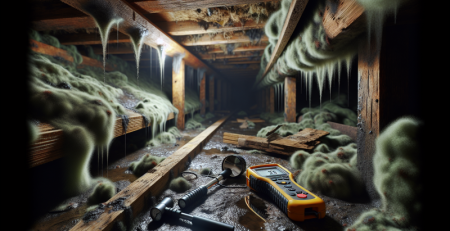Mold Risks in Vacation Homes and How to Prevent
Vacation homes are meant to be a relaxing escape, but hidden dangers like mold can quickly turn your retreat into a health hazard. Mold risks in vacation homes are often overlooked, especially when properties sit unoccupied for extended periods. Without regular maintenance and proper ventilation, moisture can build up, creating the perfect environment for mold growth. This not only damages your property but can also pose serious health risks to you and your guests. At Kraus Restoration, NJ’s leaders in water damage and mold cleanup, we understand how critical it is to protect your investment. Our IICRC-certified team specializes in mold remediation, water damage restoration, and emergency cleanup services across Central and Northern New Jersey. Whether it’s a leaky roof, burst pipe, or high humidity, we offer 24/7 emergency services and respond within one hour to help prevent mold from taking hold. With our expert mold cleanup solutions and commitment to restoring homes quickly and safely, you can enjoy peace of mind knowing your vacation property is in good hands.
Common Causes of Mold Growth in Vacation Properties
Vacation homes, often left unoccupied for extended periods, are particularly vulnerable to mold growth due to a combination of environmental and maintenance-related factors. Mold thrives in damp, dark, and poorly ventilated spaces, making vacation properties an ideal breeding ground when not properly managed. Understanding the common causes of mold in these homes is essential for prevention and long-term property care.
One of the primary contributors to mold growth in vacation properties is prolonged humidity. According to the Environmental Protection Agency (EPA), indoor humidity levels above 60 percent can significantly increase the risk of mold development. In coastal or tropical regions where vacation homes are frequently located, high humidity is a constant challenge. Without regular climate control or dehumidification, moisture accumulates in walls, ceilings, and floors, creating the perfect environment for mold spores to flourish.
Another major factor is water intrusion, which can occur through roof leaks, broken pipes, or poor drainage systems. When a vacation home is unoccupied, these issues often go unnoticed for weeks or even months, allowing water to seep into structural components and promote mold growth. The longer the water remains undetected, the more extensive the damage becomes. The Centers for Disease Control and Prevention (CDC) emphasizes that mold can begin to grow within 24 to 48 hours of water exposure, making timely detection and response critical.
Poor ventilation is also a significant contributor. Many vacation homes are sealed tightly when not in use, limiting airflow and trapping moisture inside. Bathrooms, kitchens, and basements are particularly susceptible due to their frequent exposure to water and steam. Without proper ventilation systems or regular air circulation, these areas become hotspots for mold colonies. Installing exhaust fans and periodically airing out the property can help mitigate this risk.
Neglected HVAC systems can exacerbate mold problems as well. When heating and cooling systems are not regularly maintained, they can accumulate dust, moisture, and organic material, all of which provide a food source for mold. Additionally, if the HVAC system is turned off during long periods of vacancy, humidity levels can rise unchecked. Regular maintenance and the use of programmable thermostats can help maintain a stable indoor environment and reduce the likelihood of mold growth.
Building materials and furnishings in vacation homes can also contribute to mold issues. Carpets, drywall, and upholstered furniture absorb moisture easily and can harbor mold if not properly dried after exposure. In some cases, mold can grow behind walls or under flooring, remaining hidden until it causes significant damage. This is particularly problematic in older homes or those constructed with materials that are more susceptible to moisture retention.
Lack of routine inspections and maintenance is another common cause. Property owners who do not schedule regular check-ups or fail to address minor issues promptly may unknowingly allow mold to take hold. Hiring a property management service or arranging for local caretakers to inspect the home periodically can help identify and resolve potential problems before they escalate.
In addition, natural disasters such as hurricanes, floods, or heavy storms can introduce large volumes of water into a property. If not addressed immediately, this can lead to widespread mold contamination. According to FEMA, mold can begin growing within 24 hours of a flood, and the longer the water remains, the more severe the infestation becomes. Vacation homes in disaster-prone areas should have emergency response plans and access to professional water cleanup services to minimize damage.
To summarize, the most common causes of mold growth in vacation properties include:
- High humidity levels due to climate or lack of dehumidification
- Water intrusion from leaks, broken pipes, or poor drainage
- Inadequate ventilation in bathrooms, kitchens, and basements
- Neglected HVAC systems that trap moisture and organic material
- Moisture-retaining building materials and furnishings
- Irregular inspections and delayed maintenance
- Natural disasters and delayed water damage response
“Mold can begin growing within 24 to 48 hours of water exposure, making early detection and prevention essential.” — Centers for Disease Control and Prevention
To effectively prevent mold in vacation homes, property owners should invest in regular maintenance, climate control systems, and professional inspections. Utilizing services like mold cleanup and water damage restoration can help mitigate risks and preserve the integrity of the property. For more information about how professional restoration services can protect your vacation home, visit our services page or learn more about our team of experts.
For additional resources and guidance on mold prevention, consider the following:
- EPA Mold Resources
- CDC Mold Information
- FEMA: Mold After a Disaster
By understanding and addressing these common causes, vacation homeowners can take proactive steps to prevent mold growth and ensure their properties remain safe, healthy, and enjoyable for years to come.
Effective Strategies to Prevent Mold While You’re Away
When planning to leave your vacation home unoccupied for an extended period, taking proactive steps to prevent mold growth is essential. Mold thrives in damp, dark, and poorly ventilated environments, which makes an empty home particularly vulnerable. One of the most effective strategies is to control indoor humidity levels. Before leaving, ensure that your HVAC system is functioning properly and set to maintain a consistent temperature and humidity level, ideally below 60 percent. Installing a smart thermostat or a dehumidifier with a built-in hygrometer can help regulate moisture levels remotely. Additionally, inspect the property for any potential water leaks or areas of condensation, such as under sinks, around windows, and near appliances. Fixing these issues before departure can significantly reduce the risk of mold development. It is also advisable to clean and dry all surfaces thoroughly, especially in bathrooms, kitchens, and basements, where moisture tends to accumulate. Remove any perishable items and empty trash bins to avoid organic material that can feed mold spores. For added protection, consider using mold-resistant products or treatments on vulnerable surfaces. If your vacation home has a history of water damage or mold issues, scheduling a professional inspection or cleanup service can provide peace of mind. Learn more about our specialized mold cleanup solutions designed to safeguard your property. Additionally, sealing windows and doors properly and ensuring that gutters and downspouts are clear can prevent water intrusion during storms. For homeowners seeking a comprehensive approach, our full range of services includes preventative maintenance and emergency response options tailored to vacation properties. Taking these steps not only protects your investment but also ensures a clean and healthy environment upon your return.
In conclusion, while vacation homes offer a perfect escape from the hustle and bustle of everyday life, they can also be vulnerable to mold growth due to periods of vacancy and fluctuating environmental conditions. Understanding the risks associated with mold and taking proactive steps—such as regular inspections, proper ventilation, humidity control, and timely maintenance—can go a long way in protecting your property and ensuring a safe, healthy environment for you and your guests. By staying vigilant and implementing preventative measures, you can enjoy your vacation home worry-free and preserve its value for years to come.
